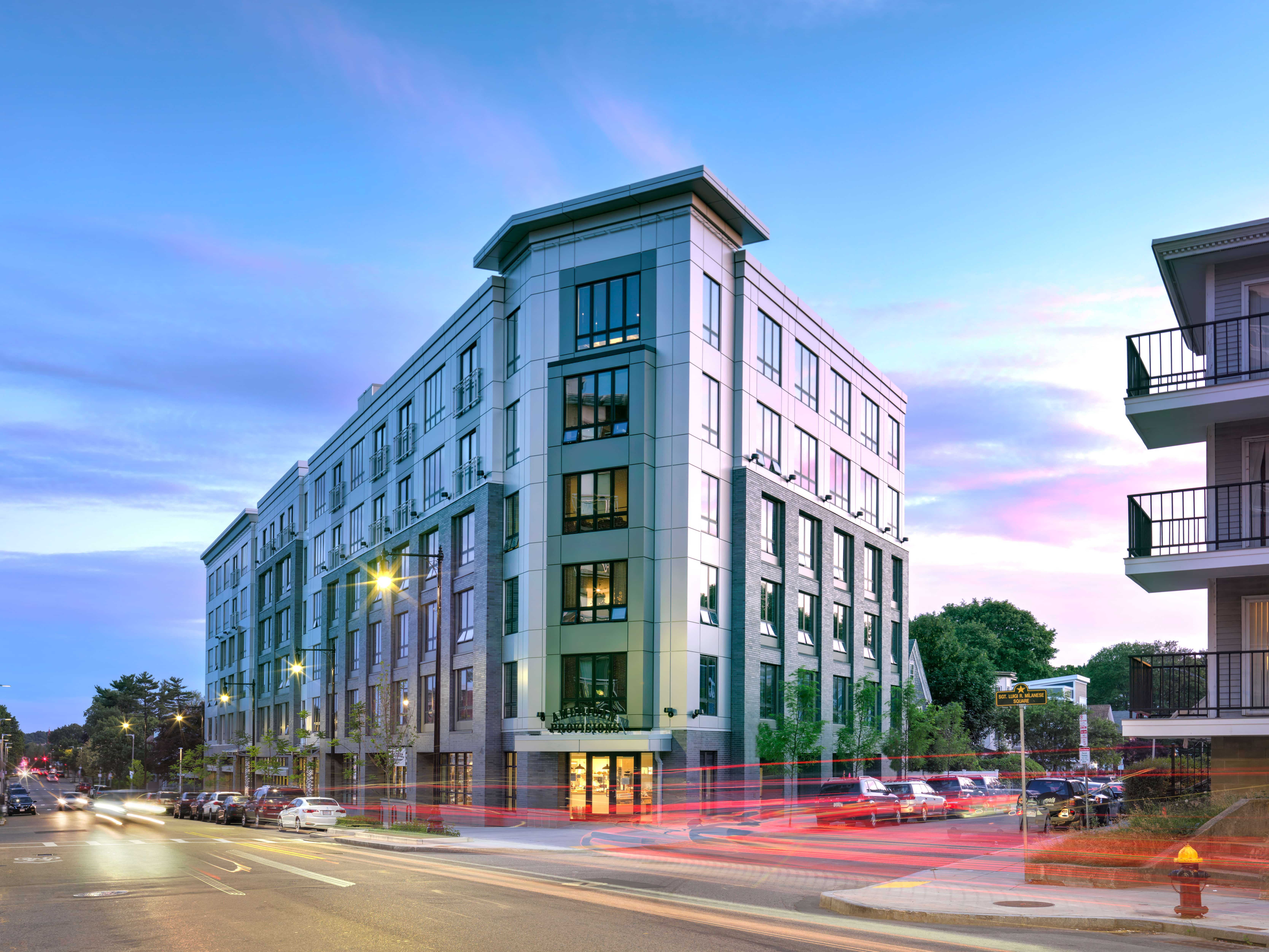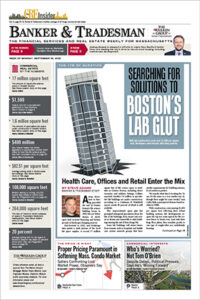
Designed by The Architectural Team, The Treadmark in Dorchester’s Peabody Square includes 51 affordable apartments and 32 condo units. Photo courtesy of TAT
A peculiar aspect of the impact of COVID is how quickly it transformed prior assumptions about what was desirable in design and urban planning. For the moment, many of these assumptions have been not merely modified, but reversed.
Density, previously promoted as good, is now seen as bad in certain quarters. Public transportation, long considered to be essential to successful urban design, is now avoided. The excitement and energy of a vibrant and bustling downtown is looked upon with suspicion. Those with means escape to social-distanced suburbs or beyond.
Ten months ago, coworking and collaborative workspace was the rage, it has been replaced by Plexiglas partitions, compartmentalization and the (supposed) freedom that remote working provides. Reduced occupancy in elevators makes tall buildings and the density they provide infeasible.
Ride-sharing via Uber, Lyft or Zipcars suddenly seems risky. Better to get into your own vehicle – alone.
Amenity for Some a Necessity for Others
But while the luxury housing market, enabled by remote working, evacuates to suburbs, and designers of market-rate multifamily housing experiment with everything from increased unit depths with interior home offices to rebalanced parking ratios, the economics that drive those modalities of design and urban planning do not necessarily apply to affordable housing.
A large proportion of affordable housing residents work in service industries. To a resident working multiple jobs, reliable, regular and affordable public transportation is essential. Work-from-home is not an option for many and the design modifications discussed in the market–rate housing world to accommodate remote work are largely irrelevant. Where transit-oriented development may be a desirable convenience in the market sector, it will remain an essential site consideration in affordable housing – providing political support for public transportation systems survives the COVID emergency.
Reversals of urban and building design trends of the last 20 years undermine both the viability of affordable housing and are contrary to sustainable design principles.
It is worth noting that developers, agencies and management companies working in the affordable housing sector have long been champions of sustainable practices independent of their association with progressive planning ideals. The industry was an early adopter of LEED and later Passive House. More recently programs such as WELL, biophilic design and the Living Building Challenge have expanded the healthful living components of those earlier programs whose brief had primarily a low-carbon-footprint, net-zero focus.
Pressures on Affordable Landlords Increase
As Sheila Dillon, Boston’s chief of housing and director of neighborhood development, points out, affordable housing has always been about more than housing, but also rebuilding communities holistically. Those communities so frequently disrupted by disinvestment and infrastructure expediency (such as the routing of highways through them) have suffered consequent environmental and lack-of-services health impacts.
Affordable housing programs seek to remedy such impacts on multiple levels. Regarding COVID, Dillon observes that within similar income demographics, communities with more affordable housing have had reduced rates of transmission compared with those that have less.
Although seemingly counterintuitive, her explanation is simple: In-unit density is greatest in poorer neighborhoods without available affordable housing. In such neighborhoods, it is common to find multiple families and several generations living in the same unit. That kind of density, the kind most likely to promote community spread, does not happen in regulated, well-managed affordable housing projects even when located in dense urban neighborhoods.

Michael E. Liu
The COVID crisis and the job loss it has precipitated has added scope to the role of owners of the well-managed affordable housing. According to Trevor Samios, vice president of connected communities at Winn Cos., there has been 30 percent job loss across all income levels in the developments they manage, which has required owners and managers to maintain an increased focus on intervention and assistance for their residents. Increased collaboration between management and residents has taken the form of education about available subsidy and rent–relief programs and an effort to streamline resource availability, and these are likely to remain in place after the period of COVID and eviction moratoriums have passed.
It remains to be seen whether the short-term impacts of COVID on market-rate design become entrenched, but the underlying reasons that made controlled, well-designed density and public transit a desirable convenience to the well-off remain vital necessities to the communities that affordable housing programs serve. By necessity, it’s likely affordable housing will resist COVID-induced retreat from sustainable planning principles and hasten landlord-tenant cooperation going forward.
Michael Liu is a senior partner and design principal at The Architectural Team.





